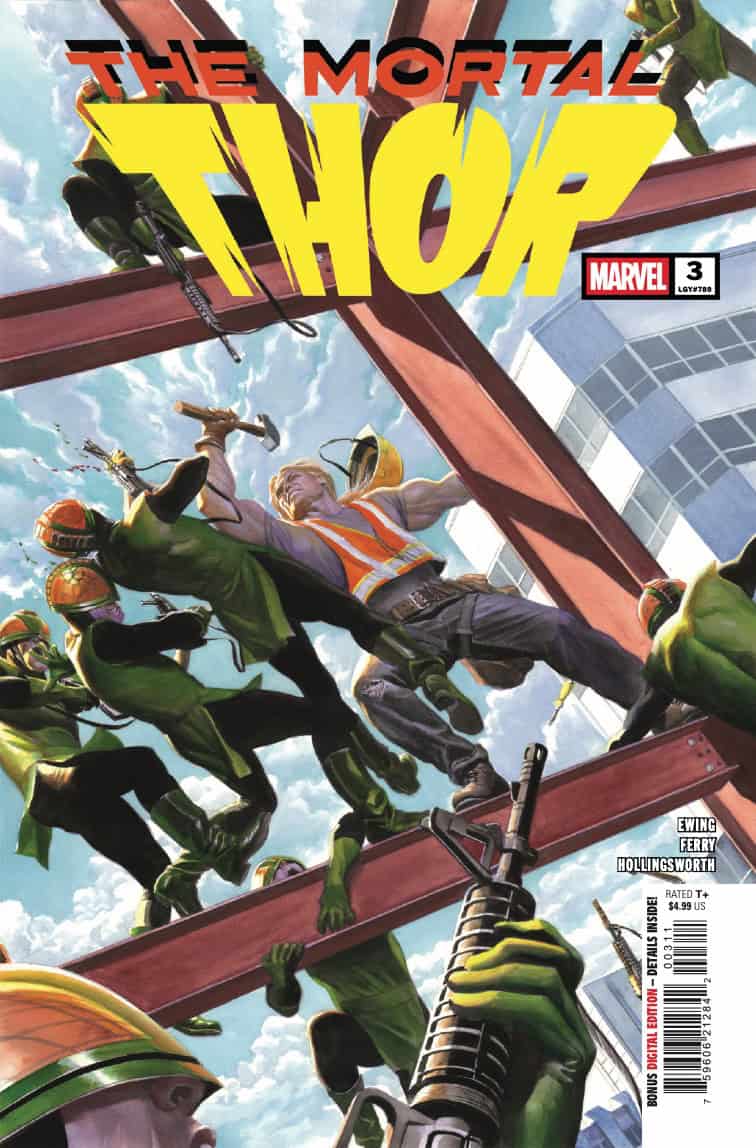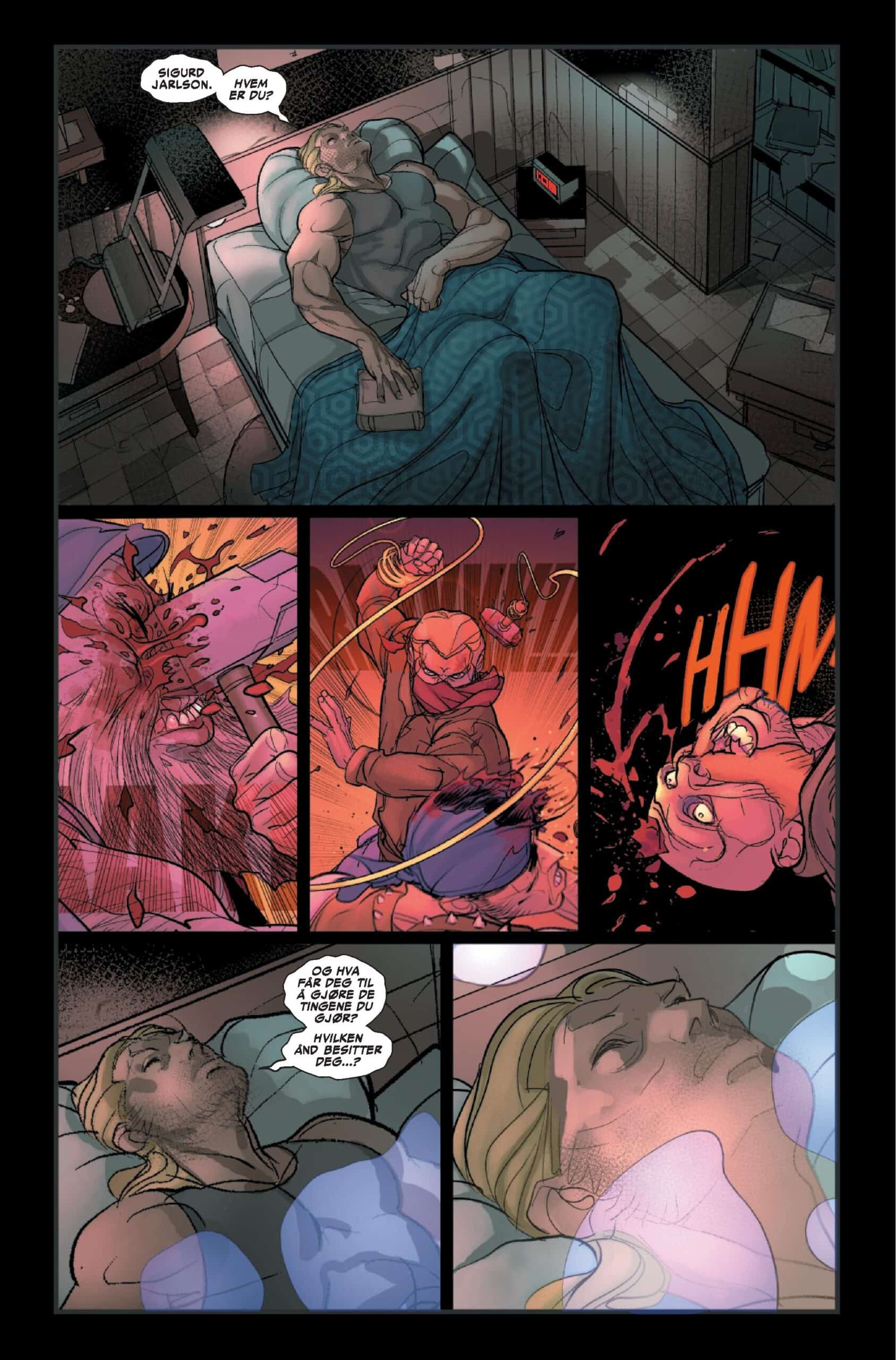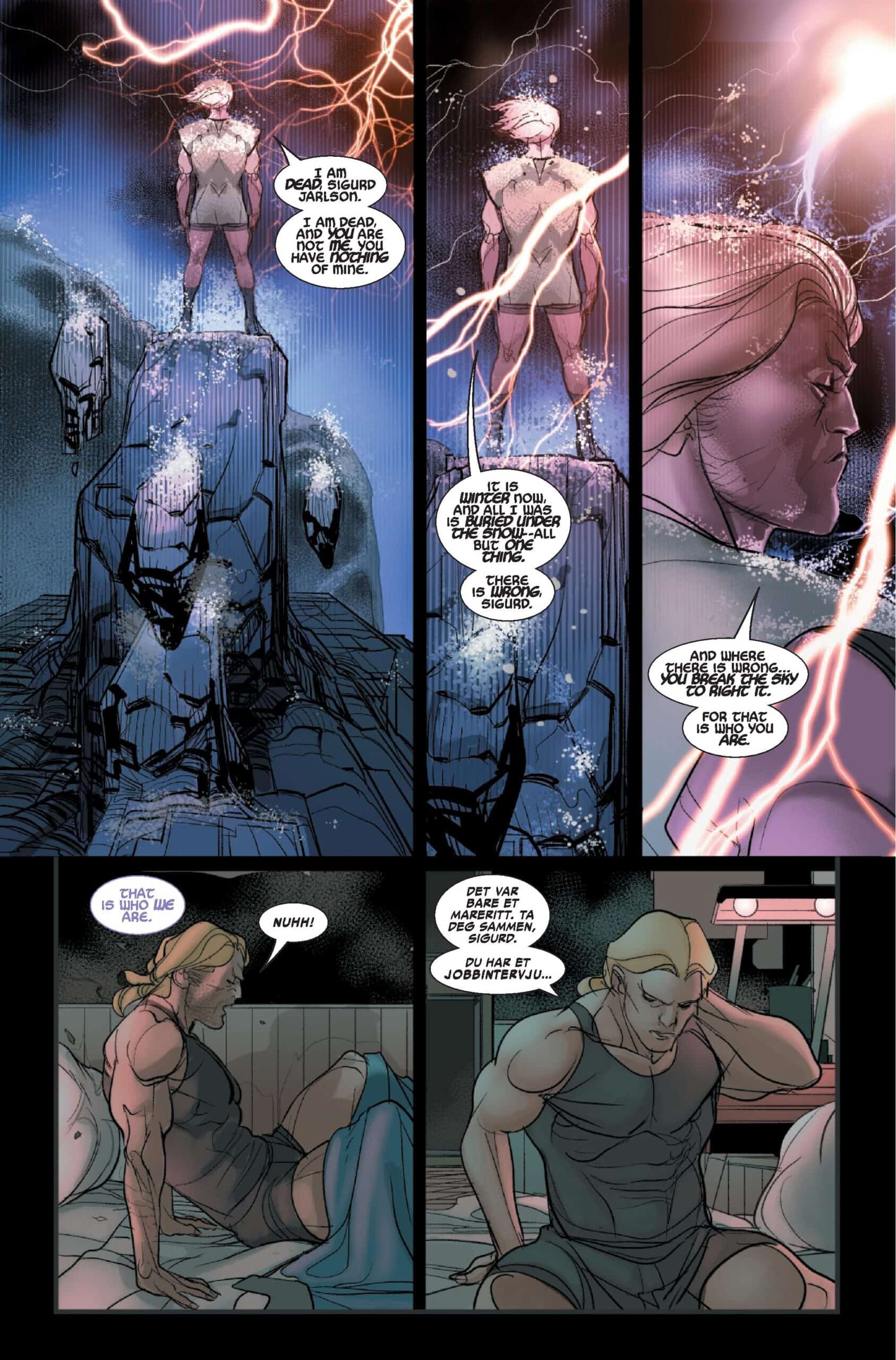The Mortal Thor #3

Recap
Thor has been reborn on Earth as a mortal amnesiac construction worker named Sigurd Jarlsson in a world that has forgotten that Norse gods once walked among them. Loki has taken on the guise of a mischievous street urchin named Lucky. Sigurd’s neighbor is an artist haunted by visions of gods—of Thor. Last issue, Sigurd hunted down a white supremacist biker gang paid to intimidate immigrant day laborers (Sigurd included) at a Roxxon construction site. He fought the bikers with an improvised weapon: a short-handled hammer attached to a length of rope. Little did he know, Roxxon and the bikers were working hand in hand with another foe: Thor’s former alter-ego Donald Blake.
Review
When Stan Lee and Jack Kirby first introduced readers to Thor on the pages of Journey Into Mystery #83 (1962), they did as they’d done for numerous other Marvel heroes: gave him an alter ego—a human surgeon named Donald Blake, who had no memory of being Thor. Decades later, under the pen of Walt Simonson, a re-awakened Thor began assuming another identity—that of Norwegian construction worker Sigurd Jarlsson. And now, in The Mortal Thor, we find these two former alter egos, Donald and Sigurd, butting heads. Thor, the immortal god, meanwhile, is very much dead.

Mortal Thor #3’s opening pages are no doubt its strongest, offering a deeper introduction to the Serpent: the comic’s bold new interpretation of Donald Blake. Blake, in Pasqual Ferry’s redesign, feels unquestionably serpentine, sporting a green ensemble and svelte silhouette. His face is gaunt, almost elfin, and is sometimes twisted by a grin reminiscent of the Joker or the Grinch. Donny Cates and Nic Klein’s Thor reworked Thor’s cast-off alter ego Donald Blake as a villainous madman out for revenge, but here he resembles a real and omnipresent Donald. Writer Al Ewing and Ferry’s Blake is a fascist strongman stoking anti-immigrant hatred and telling his acolytes the lies they long to hear while openly telling them that he’s lying to them. And having taken on Loki’s former role as God of Lies, it seems fitting that he quotes one of Loki’s speeches from the first Avengers film: “you will always kneel.” The interchangeable acolytes themselves evoke HYDRA goons and Stormtroopers: they wear silly uniforms, stand in formation, and call their fascist strongman “father.”

After these opening pages, however, the comic fades into something less substantive. While Ewing’s best Thor writing feels like a five-course feast that offers plenty to chew on between installments, The Mortal Thor #3 is a quick bite by comparison. The issue takes a while to gain momentum and the end arrives just as things start heating up. While the pacing will no doubt feel more natural in a trade paperback setting, it makes for a mildly underwhelming single issue. Ferry’s art feels stifled by the issue’s aggressively linear construction site setting, but his figures and faces retain a strong sense of dynamism and fluidity. And although Matt Hollingsworth’s colors continue to lack textural variety, they nonetheless effectively convey the comic’s mood and changes in setting.
Final Thoughts
The Mortal Thor #3 is an unevenly paced installment that establishes a fascinating central dynamic between Thor’s former alter egos.
The Mortal Thor #3: The Men Who Would Be Thor
- Writing - 7.5/107.5/10
- Storyline - 7/107/10
- Art - 7.5/107.5/10
- Color - 7/107/10
- Cover Art - 9/109/10





